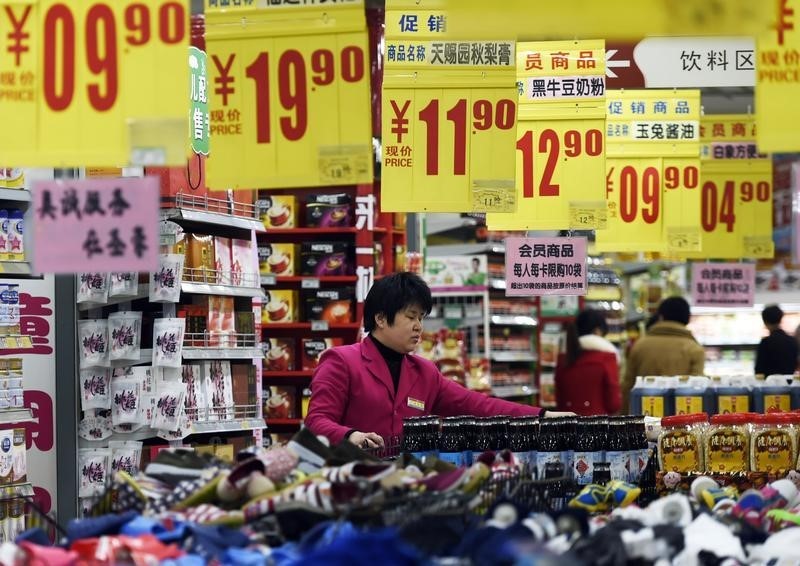By Gina Lee
Investing.com – China's factory inflation saw its pace quicken, according to Monday’s official data showed on Monday. However, the world’s second-largest economy continues to deal with the inflationary pressures from Russia’s invasion of Ukraine on Feb. 24 and its latest COVID-19 outbreak.
Data from the National Bureau of Statistics showed that China’s consumer price index grew 0% month-on-month. Forecasts prepared by Investing.com predicted a 0.1% contraction, while the previous month’s growth was 0.6%.
The CPI grew 1.5% year-on-year, compared to the 1.2% growth predicted in forecasts prepared by Investing.com and the previous month’s 0.9% growth.
The data also showed that the producer price index grew 8.3%. year-on-year, with forecasts prepared by Investing.com predicting a 7.9% growth and a growth of 8.8% recorded during the previous month.
China’s economic recovery came under downward pressure in March 2022, as the country battles its latest COVID-19 outbreak. Activity in both the manufacturing and services sectors also declined.
In response, the government has unveiled policies to support the economy which include more fiscal spending and reductions in income tax for small firms. China's State Council vowed more support measures for consumption and investment during the previous week.
Food prices fell 1.5% year-on-year in March, compared to the previous month’s 3.9% drop, which resulted in a drop of 0.28 percentage points in headline CPI. The still modest consumer inflation was an indication that demand remains weak, as the country’s strict COVID-19 control measures dented the sentiment in consumption.
China reported 26,411 new asymptomatic COVID-19 cases for Sunday, of which 25,000 were in Shanghai. The city continues to remain under lockdown.
Shanghai’s economy will shrink 6% in April 2022 alone if the current lockdown persists, which is equivalent to a 2% gross domestic product decline for the whole of China, warned ING chief economist for Greater China Iris Pang.
Most investors also expect the People's Bank of China to lower borrowing costs and cut reserve requirements for banks, or lower interest rates to inject more cash into the economy.
